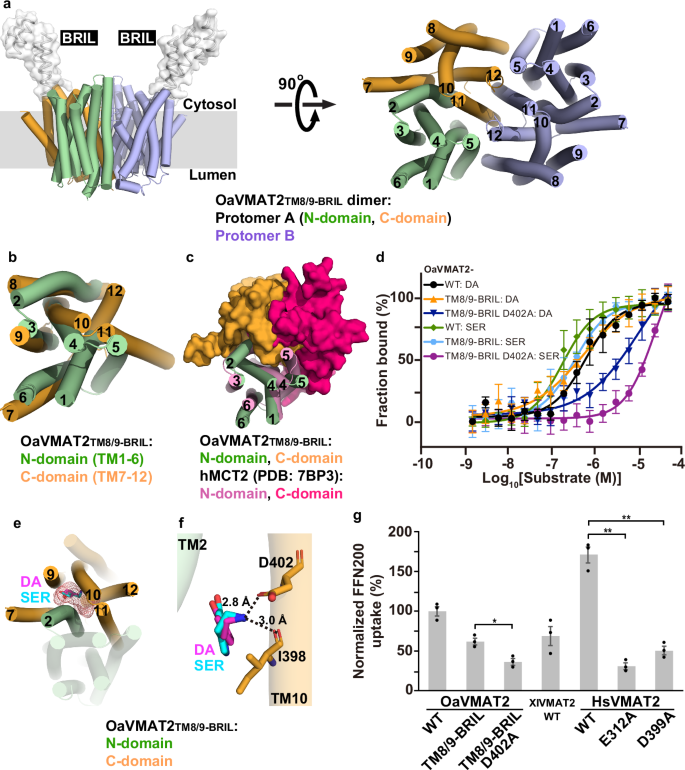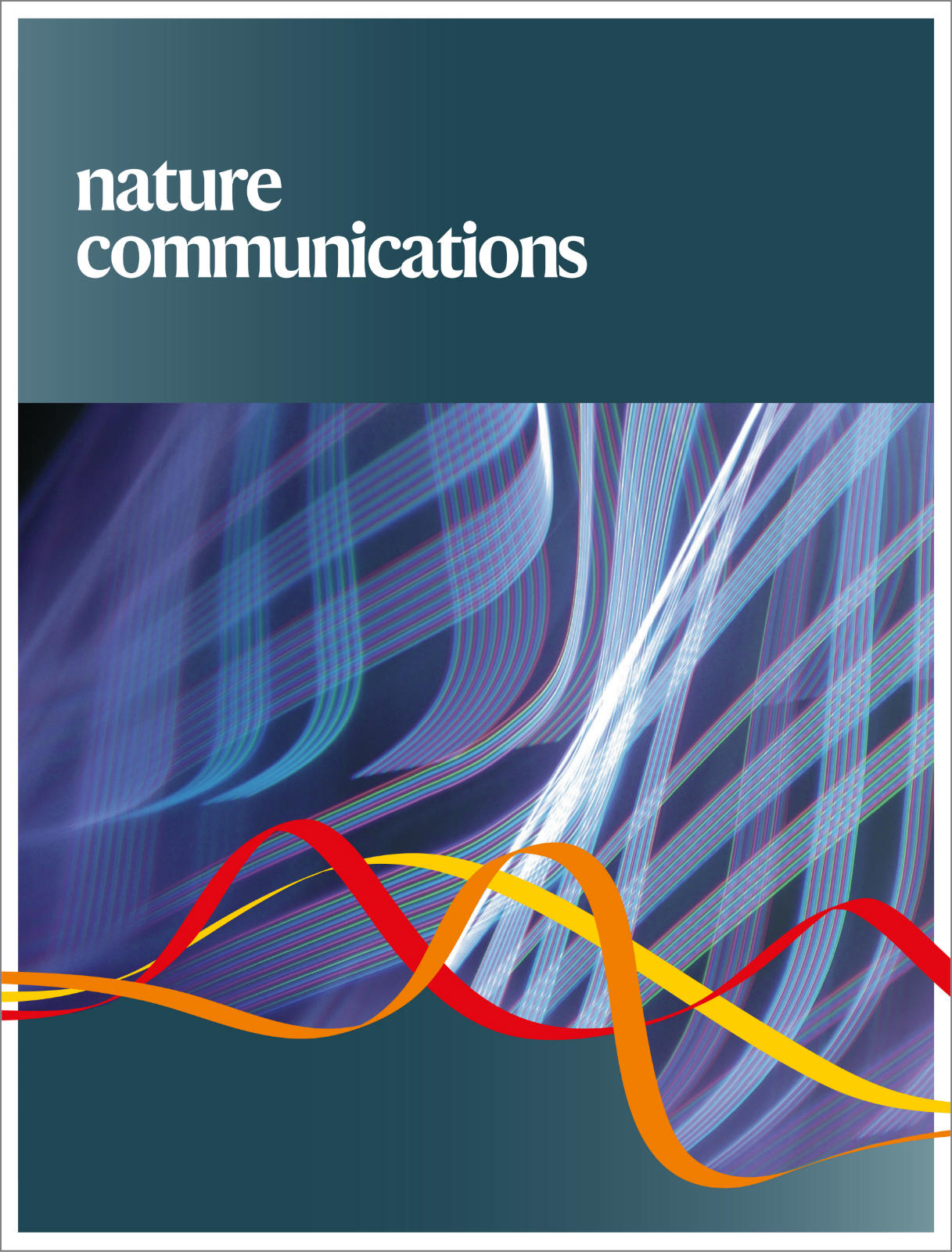对哺乳动物 VMAT2 进行冷冻电镜分析会导致蛋白质折叠不规范
IF 14.7
1区 综合性期刊
Q1 MULTIDISCIPLINARY SCIENCES
引用次数: 0
摘要
囊泡单胺转运体 2(Vesicular monoamine transporter 2,VMAT2)属于主要促进剂超家族(major facilitator superfamily,MFS),介导细胞质中的单胺包装成突触前囊泡。在这里,我们展示了两种 VMAT2 的低温电子显微镜结构,其中一种青蛙 VMAT2 采用了典型的 MFS 折叠结构,而另一种经过改造的绵羊 VMAT2 则采用了非典型折叠结构。这两种 VMAT2 蛋白都能介导细胞吸收选择性荧光 VMAT2 底物。分子对接、底物结合和运输分析揭示了 VMAT2 潜在的底物结合机制。同时,在解释工程膜蛋白结构时应谨慎。本文章由计算机程序翻译,如有差异,请以英文原文为准。

Engineering of a mammalian VMAT2 for cryo-EM analysis results in non-canonical protein folding
Vesicular monoamine transporter 2 (VMAT2) belongs to the major facilitator superfamily (MFS), and mediates cytoplasmic monoamine packaging into presynaptic vesicles. Here, we present two cryo-EM structures of VMAT2, with a frog VMAT2 adopting a canonical MFS fold and an engineered sheep VMAT2 adopting a non-canonical fold. Both VMAT2 proteins mediate uptake of a selective fluorescent VMAT2 substrate into cells. Molecular docking, substrate binding and transport analysis reveal potential substrate binding mechanism in VMAT2. Meanwhile, caution is advised when interpreting engineered membrane protein structures.
求助全文
通过发布文献求助,成功后即可免费获取论文全文。
去求助
来源期刊

Nature Communications
Biological Science Disciplines-
CiteScore
24.90
自引率
2.40%
发文量
6928
审稿时长
3.7 months
期刊介绍:
Nature Communications, an open-access journal, publishes high-quality research spanning all areas of the natural sciences. Papers featured in the journal showcase significant advances relevant to specialists in each respective field. With a 2-year impact factor of 16.6 (2022) and a median time of 8 days from submission to the first editorial decision, Nature Communications is committed to rapid dissemination of research findings. As a multidisciplinary journal, it welcomes contributions from biological, health, physical, chemical, Earth, social, mathematical, applied, and engineering sciences, aiming to highlight important breakthroughs within each domain.
 求助内容:
求助内容: 应助结果提醒方式:
应助结果提醒方式:


